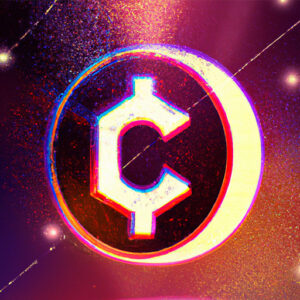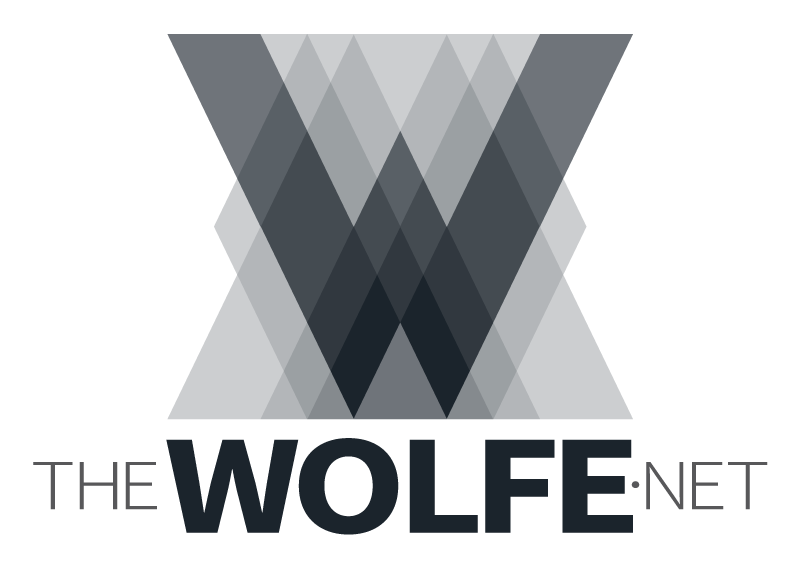First, it should be said that everyone has varying opinions and definitions when it comes to Web 3.0, metaverse, and everything related. These are all just opinions at this point as none of these concepts have been solidified enough yet in the market to have a standard definition. Commercial companies have an incentive to cast the definitions of these emerging spaces in a light that benefits them, as do many individuals. Like so many others before me, I offer you my definitions that I believe will win in the market and be the best for all participants as we move to the next technology era.
What is Web 3.0 and how is it different?
 Web 3.0 is the moniker given to the set of underlying technologies and principles that are expected to carry us forward to the next era. Web 3.0 is in contrast to Web 2.0 and Web 1.0, which are well defined eras that have come before. Web 2.0 is the era we are predominately in now and that relies on websites, reactive designs, social media, and active commerce conducted on the internet through web properties and branded social media. Web 3.0 introduces a few key technologies and principles. It introduces blockchain as a fundamental and reliable underpinning. It introduces the concept of decentralized ownership, which is a fundamental shift from the business model we are in today. Lastly, it introduces the underpinning of interoperability, which is key for decentralization to exist and for companies to have their realms for all of us to have our brand affinity fix. Let’s unpack each of these more.
Web 3.0 is the moniker given to the set of underlying technologies and principles that are expected to carry us forward to the next era. Web 3.0 is in contrast to Web 2.0 and Web 1.0, which are well defined eras that have come before. Web 2.0 is the era we are predominately in now and that relies on websites, reactive designs, social media, and active commerce conducted on the internet through web properties and branded social media. Web 3.0 introduces a few key technologies and principles. It introduces blockchain as a fundamental and reliable underpinning. It introduces the concept of decentralized ownership, which is a fundamental shift from the business model we are in today. Lastly, it introduces the underpinning of interoperability, which is key for decentralization to exist and for companies to have their realms for all of us to have our brand affinity fix. Let’s unpack each of these more.
Blockchain is a technology that uses some pretty simple programming concepts that the financial world has grown comfortable with in recent years. It relies on cryptography to sign linked lists and form a ledger of activity that can be shared by many people so that no one person is trusted with the record. This sharing or decentralization is a key point of differentiation from government issued currency, and it is what has caused this technology to gain in popularity. There is nothing magical about blockchain technology itself because the magic is in the implementation. A centralized company can implement their own blockchain that only relies on servers they control to “own” the blockchain. Creation of your own private blockchain does not meet the decentralized criteria, but you will see this happen, and knowing how to tell that it is centralized will be important as things evolve. Blockchain is primarily known for its role in enabling the popularity of cryptocurrency recently, but it is also used in healthcare, supply chain management, and other areas of industry fairly successfully.
 Decentralized ownership needs some unpacking as well. A key principle to making Web 3.0 all it can be is ensuring that no one or few entities own the data, ensuring consumers control and own the assets, and maintaining consumers are in charge of their online identities. In the Web 2.0 model of today, the corporations own the data, and the assets and they are in control of your online identity. If you post photos to your social media account, the corporation owns them. If you use a corporation’s app in Central America on vacation, it owns that knowledge of your location and can do whatever will help further its interests most. If you unlock that hidden level of your favorite video game or buy with real money a weapon or bling for your gaming character, the centralized company owns that too. In Web 3.0, the power shifts to you, the consumer. If you buy an asset with fiat cash or crypto currency, it belongs to you. It is cryptographically signed and added to the assets that you control, and the record of those assets is on the blockchain, which, as noted above, is not controlled or stored by any one entity. The benefit here is that that game or company could come and go or change their rules or do whatever they want to do and your investment is still yours and you can manage it or use it in whatever way you want even if they are here or gone. This is where interoperability becomes critical.
Decentralized ownership needs some unpacking as well. A key principle to making Web 3.0 all it can be is ensuring that no one or few entities own the data, ensuring consumers control and own the assets, and maintaining consumers are in charge of their online identities. In the Web 2.0 model of today, the corporations own the data, and the assets and they are in control of your online identity. If you post photos to your social media account, the corporation owns them. If you use a corporation’s app in Central America on vacation, it owns that knowledge of your location and can do whatever will help further its interests most. If you unlock that hidden level of your favorite video game or buy with real money a weapon or bling for your gaming character, the centralized company owns that too. In Web 3.0, the power shifts to you, the consumer. If you buy an asset with fiat cash or crypto currency, it belongs to you. It is cryptographically signed and added to the assets that you control, and the record of those assets is on the blockchain, which, as noted above, is not controlled or stored by any one entity. The benefit here is that that game or company could come and go or change their rules or do whatever they want to do and your investment is still yours and you can manage it or use it in whatever way you want even if they are here or gone. This is where interoperability becomes critical.
For decentralization to happen and you to still be able to play your favorite video game from Epic or whoever else offers it, the company offering it has to interoperate with Web 3.0. The brands have to buy in and make it easy for data and assets to interoperate. The benefits the companies offer you need to be portable and able to be used in other games by other companies in order for everyone to get the maximum benefit and for companies to claim interoperability in this new space. The more dilution of this vision, the less valuable the assets you create on their platform become in the decentralized world. There becomes a built-in incentive to be interoperable after momentum has turned in favor of Web 3.0 principles. Getting momentum to turn, however, will be the trial of this new vision. Meta, formerly known as Facebook, has bet they can stop this tide and maintain their centralized hold on customer data within their version of Web 3.0. They are betting the farm, including their name, on the fact that they can continue to confuse and dazzle consumers into continuing to give away all their assets and rights. They are not alone. This is capitalism at play, and it will fight to survive in the world it knows best. But I digress.
Built on these three principles, the vision of Web 3.0 brings wonderful creations like NFTs or non-fungible tokens, P2E or play-to-earn games, and DAOs, which are decentralized autonomous organizations, to every consumer who wants to participate. I’ll write more on each of these later.
What is the Metaverse?
 You can read a lot of articles about what the metaverse is or isn’t, and, like Web 3.0, everyone has a vision and a hope and a dream. My opinion is that the term metaverse describes anything that allows the user to enter a virtual space or world that allows them to feel or be more connected than the current website and app interactions. If you are in your favorite game and there is a live virtual concert, then that is a great example of people moving toward a metaverse. For most, the full vision of the metaverse is a virtual world that feels real to the end user through use of virtual reality or augmented reality or mixed reality, but I don’t believe these elements are necessary for an early stage metaverse experience.
You can read a lot of articles about what the metaverse is or isn’t, and, like Web 3.0, everyone has a vision and a hope and a dream. My opinion is that the term metaverse describes anything that allows the user to enter a virtual space or world that allows them to feel or be more connected than the current website and app interactions. If you are in your favorite game and there is a live virtual concert, then that is a great example of people moving toward a metaverse. For most, the full vision of the metaverse is a virtual world that feels real to the end user through use of virtual reality or augmented reality or mixed reality, but I don’t believe these elements are necessary for an early stage metaverse experience.
How are the Metaverse and Web 3.0 related?
These two get interesting when they are brought together. The promise of a virtual world where we own and control our identities and assets and can even buy, sell, and trade freely without a centralized company controlling or mitigating this flow of exchange is a future worth trying to bring about. When the underlying concepts of Web 3.0 are combined with the vision of the metaverse, you can imagine disruption across many currently established business models as well as social disruption and a freer marketplace. The opportunity this presents to brands and companies that have interactions with consumers is enormous, and you can see this by all of the early participation and scrambling to create parts of this vision, even if initial attempts are more centralized and lack the interoperability. The metaverse will rely on Web 3.0 for its success if it is to be the open virtual space that we all hope will come about. These two are inextricably linked at the hip.
How does cryptocurrency fit in?
 Cryptocurrency is an important part of this picture as it allows for the finance part of this new virtual ecosystem to exist in a decentralized way without the traditional centralized bank establishment. With the centralized banking model today, if your money is in a bank in the United States and you want to exchange a virtual item with someone who happens to be in Iran, you would likely just become frustrated and give up as this is very difficult to do and quite slow and costly. With the decentralized system of cryptocurrency, you could have this item and the exchange done in minutes and not really even know or worry about where the other person is located. You would safely have your item in your digital wallet, and you would have made the exchange in a frictionless way. This kind of interaction will be key for both Web 3.0 and the metaverse if we are going to interact in a world filled with digital items that we all own ourselves and want to exchange often. NFTs are a great example of this you have likely heard of. Today they are being used by brands and independent artists to provide art and collectables in the emerging Web 3.0 and metaverse. Digital wallets will be the passport of the Web 3.0 and metaverse world, and they will allow you to connect and exchange items and do everyday finance in a decentralized and frictionless way.
Cryptocurrency is an important part of this picture as it allows for the finance part of this new virtual ecosystem to exist in a decentralized way without the traditional centralized bank establishment. With the centralized banking model today, if your money is in a bank in the United States and you want to exchange a virtual item with someone who happens to be in Iran, you would likely just become frustrated and give up as this is very difficult to do and quite slow and costly. With the decentralized system of cryptocurrency, you could have this item and the exchange done in minutes and not really even know or worry about where the other person is located. You would safely have your item in your digital wallet, and you would have made the exchange in a frictionless way. This kind of interaction will be key for both Web 3.0 and the metaverse if we are going to interact in a world filled with digital items that we all own ourselves and want to exchange often. NFTs are a great example of this you have likely heard of. Today they are being used by brands and independent artists to provide art and collectables in the emerging Web 3.0 and metaverse. Digital wallets will be the passport of the Web 3.0 and metaverse world, and they will allow you to connect and exchange items and do everyday finance in a decentralized and frictionless way.
What does it all mean?
The main meaning is that change is coming. How the vision will shape up and how decentralized things will be are highly dependent on how all of the consumers choose to participate or push large tech companies and brands to adopt decentralization and interoperability. Does your company have a Web 3.0 and/or metaverse strategy? How will your business or industry change when vast numbers of people spend more and more time interacting in virtual worlds? Is your company strategy to hope that these things don’t happen on your watch? Big tech has invested billions at this point on bringing their versions of Web 3.0 and the metaverse and they will play a key role in bringing about this change. I would start to understand the terms and concepts and have a strategy or theory on how this will evolve your company and industry. Plan for change. At least that’s my opinion.
If you need help or guidance on this or other strategy topics, feel free to reach out to us. We would love to help you form your strategy!
